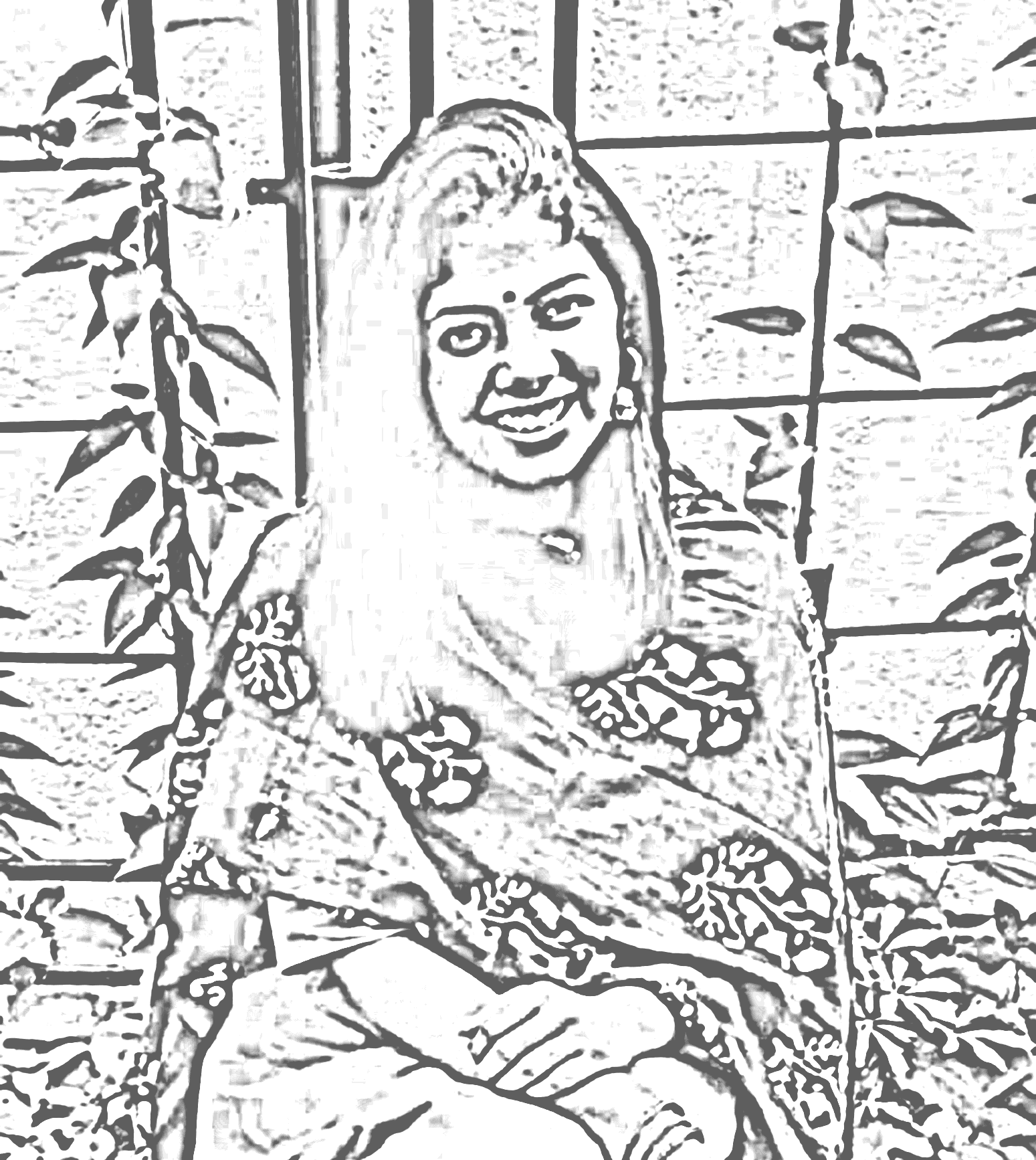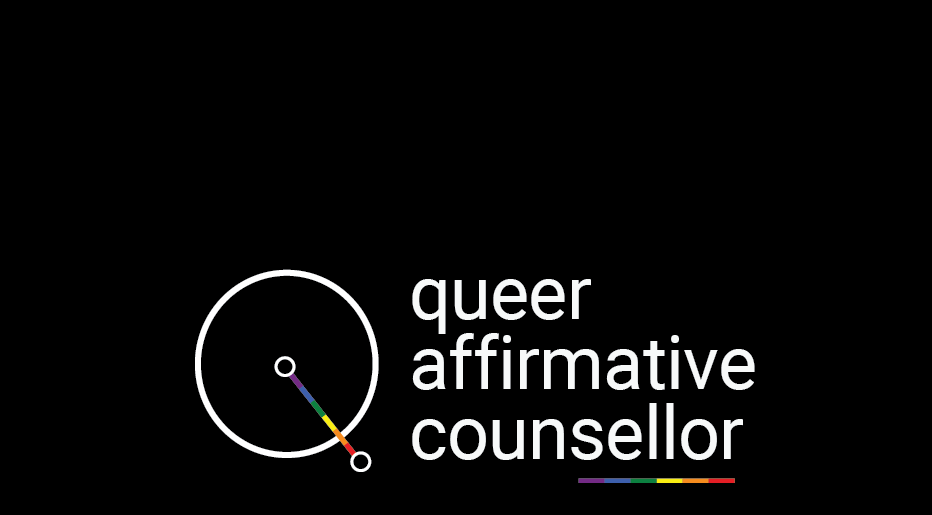Professional Solidarity : What Queer Affirmative Counselling Practice Means To Me As A Mental Health Practitioner
Imposter Revealed
From 2016 to 2018, there have been multiple times when I have felt like an imposter in my work. I claimed to be something, to be able to do something, say something, change something – but never truly owned those claims, never aligned with them. My textbooks and teachers have always told me in direct and indirect ways that my job as a psychologist is to describe, explain, predict, and control behaviour. The 4 tenets of psychology, yes? Yes. Maybe. I was never sure.
But that is what I had to say, display, practise, be. Because who am I if I’m unable to theorize my clients’ behavioural patterns? Who am I if I do not want to speak in diagnostic categories like it’s my mother tongue? Who am I if I do not ask questions in a manner almost akin to robots to fill out a mental checklist of symptom criteria? The tag of a ‘clinical psychologist’ held me in a deadlock, looked at me with glaring eyes and questioned with a stern voice of dismay – Who are you if you cannot pathologize to ultimately describe, explain, predict, control?
I was meant to look at people who consulted me through the lens of the DSM and I spoke about diagnosis being a crucial part of my work. I have spent many afternoons writing session notes about people’s lives, feeling incompetent and less-than the other psychologists out there whom I had witnessed rattling out diagnoses and case conceptualizations like it was the back of their hand. I didn’t feel like doing it. It did not feel humane. Countless days of locating myself on an imaginary scale of competence left me feeling like I could never match up. So, the conclusion in my mind often was that I’m not a good enough professional.
It was a constant feeling of a pit in my gut.
Square Pegs Protesting Round Holes
When I stumbled upon Narrative Therapy Practices in early 2018, I entertained the idea that maybe the feeling of a pit in my gut – that I so passionately believed was incompetence or failure – was not about that at all. Maybe that pit in my gut was my body’s wisdom, trying to tell me something. Maybe it signalled an act of questioning, protesting what is known about psychology and psychologists. A small act of rebellion in my body towards this incessant need to diagnose and label people who consult with us in therapy, before we build a relationship of trust with them. Maybe my body was standing up for the belief that people are the experts in their lives, not diagnosticians. Tucked away under the folds of the norm, this belief found an opening in that room full of Narrative Therapy practitioners - and it was like homecoming.
That pit in my gut continues to exist but I now see it as a sign of protesting the norm of round holes that square pegs like me are forced to fit into. It encourages me to pause before I diagnose, to be curious instead of analytical, and to travel the landscapes of my clients’ lives with them to witness what's in store before I place their experiences into boxes of diagnoses.
“I left with an understanding that a true therapist ally is one who stands in solidarity with queer lives and rights, not only in private but in professional spaces too. Passing the mic is possible only when a therapist ally believes that people are experts”
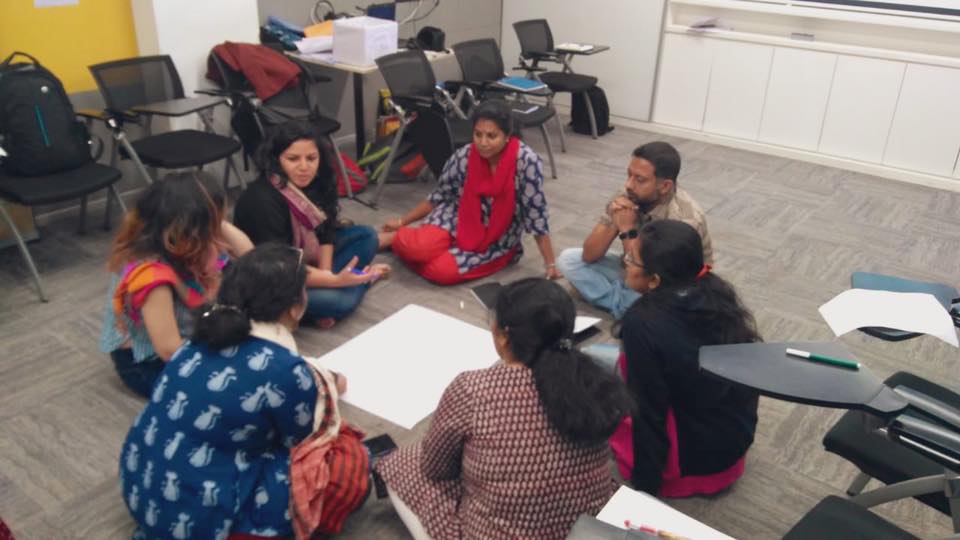
QACP participants in breakout discussion groups
Questioning Norms and Buzzwords
Existential crisis aside, another experience that led me here was when section 377 was read down on 6th September, 2018. There was a sudden influx of the term “queer friendly counselling” that became visible to me. It was like the new “mindfulness” or “trauma informed practice”. Once again, I found myself in a potential deadlock with incompetence because I did not know what “queer friendly” meant. Was I a queer friendly therapist? Did I know what made one? Were psychologists using it as a buzzword for their online profiles or did they really create safe spaces for queer people?
This time, I knew better to not fall down that rabbit hole of concluding that I’m not good enough. I knew that my feelings of insecurity at work were usually a signal that I was questioning a norm. This time, I was questioning, why was I never exposed to information, stories and knowledge about queer lives and mental health? Why has my knowledge of queerness only been restricted to inauthentic, demeaning caricatures in the movies? Why has my understanding of queer mental health been limited to pathologization and terms like ‘Gender Identity Disorder’? Why didn’t the community of mental health professionals talk enough about this?
I knew from the experience of finding my Narrative Therapy tribe that the way out of this maze of questions was to find a community that aligns with me and collectively learns with me what it really means to be a “queer affirmative” (upon correction of “friendly”) counsellor, so that I do not limit myself to a buzzword. This led me to joining the QACP training by Mariwala Health Initiative and it would be safe to say that I've found yet another tribe to call mine.
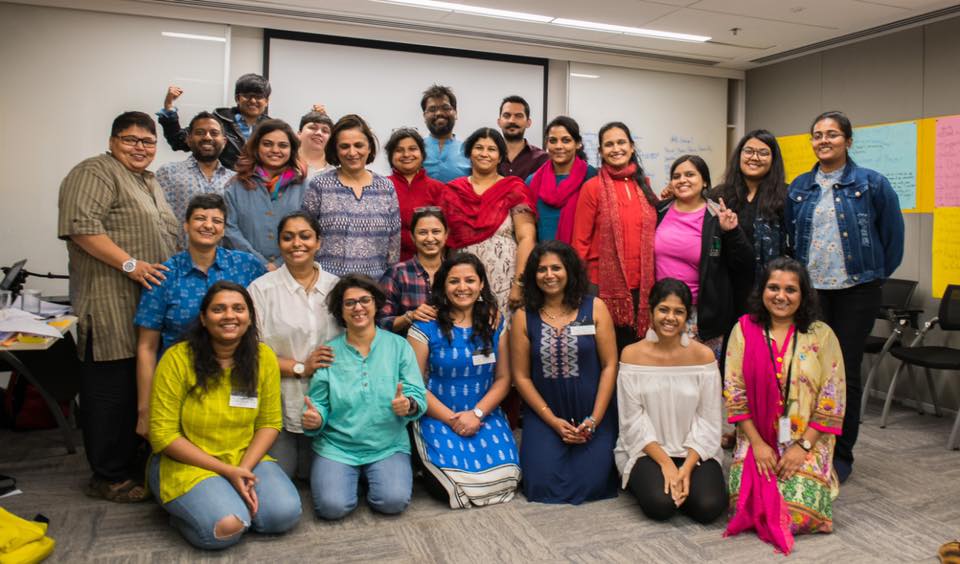
QACP participants complete a training workshop in Mumbai
Finding a tribe at QACP
Questioning what’s known in academic and professional spaces can be a lonely experience. When we question something that has been fed to us as the norm for years, the loneliness makes it easy to believe the “I am incompetent/I am the odd one out” shtick. To escape that, we owe it to ourselves to find something else that validates our questioning, that understands it, that holds space for it and that questions, too. A something else that helps us know that we are not the only crazy ones whose favourite extreme sport is dismantling the dominant.
We owe it to ourselves to find the knowledge and training that sits well with our insides, almost as if they untangle the knots in our heads and hearts that have been created from years of educational dictatorship.
I found this in Narrative Therapy Practices last year. I have found it again in QACP this year.
QACP is that knowledge and training for me, that frees up my knots to make space, and finds a home for my head and heart.
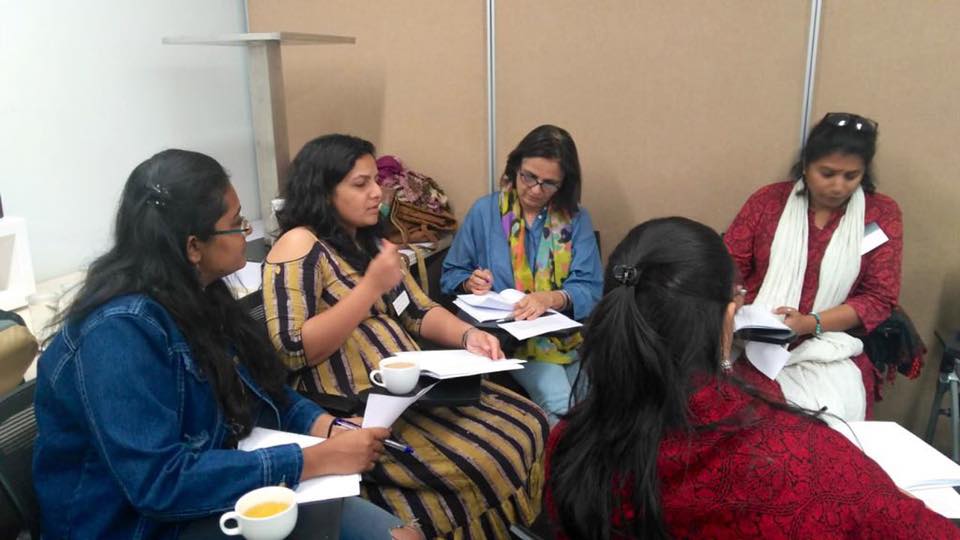
QACP participants sharing perspectives and building a queer-affirmative lens
Reflections and Rethinking
Here are a few of the many reflections I walked away with from the training:
1. The nuance of the difference between a queer friendly practice and a queer affirmative practice is a significant one that QACP helped me recognize. Out of the many differences, the one that stayed close to me was the concept of “a non-judgmental therapist”. Counsellor training teaches us that being non-judgmental is about communicating verbally and non-verbally to the client that they can be their complete selves in the therapy room because no bias, moral labels, or judgments will be passed. Apart from being internally unprejudiced, how do I ensure this practically? By nodding, uttering ‘hmm’, not raising eyebrows or making insensitive facial expressions, and offering safe silence when the client brings up anything that may not fit within the charmed circles of society. In this context, we are talking about their sexuality and/or gender identity.
But, is nodding and silence enough to state the safety of this space and communicate the trust in this relationship for the client? QACP helped me realize that it is not. While nodding and silence may convey respect and some extent of no judgment, they border dangerously on erasure if these actions are done in isolation without later circling back to what has been spoken about. This is the crux of the difference between neutral/friendly practice and affirmative practice. This is where my influence as a therapist plays an important role. I have the privilege to pick up, respond to, ask about the client’s gender and sexuality if it has been brought up. I have the responsibility to do so deliberately because I want them to know that they are seen. Does only nodding and silence help them feel seen? Does it communicate to them that their experience is being acknowledged? No. Instead, nodding and silence alone has the potential to communicate apathy, “being above it all”, or plain ignorance.
So, the question that arose for me was, am I using nodding and silence to make this a safe space for them or am I using it to safeguard myself from my own discomfort? It’s like diplomacy, isn’t it? I’m neither passionately agreeing with you nor vehemently rejecting you. Then, what am I doing? Who am I saving by taking this stance of neutrality? What privilege am I protecting? Am I scared of saying something wrong, so I take the “safer” position of not saying anything at all? I hate to break it to myself, but the latter is just as harmful as the former in its own ways.
QACP encouraged me to re-evaluate how a safe space is created and communicated. It taught me that a safe space is felt when lived experience is acknowledged and made visible deliberately. This is the essence of the affirmative practice for me.
2. I’ve always believed that therapy is a political act, because here I am, unabashedly in favour of only one person – my client. However, I have often struggled with finding a balance between being a therapist and an advocate. QACP offered me a reality check that they don’t have to be mutually exclusive. Hiding behind popular phrases such as “I’m a therapist so I am an objective third party”, “I will always understand where everybody is coming from even when they are being hateful, so I can’t really say anything”, “I’m a therapist, not a politician” is yet another sub plot of neutral practice that reeks of privilege. I either believe that queer people have rights, or I believe they don’t. It’s black or white. I do not get to award myself the superficial comfort of a “grey area” as a queer affirmative therapist. If I believe in queer people’s right to exist and thrive, shying away from claiming this position – in public and personal spaces – is frankly, not an option.
3. QACP has been a reminder to check my cisgendered, heteronormative, Brahmin privilege that I bring into any room I’m in, especially in therapeutic spaces. It’s crucial that I’m firstly aware of it and that I’m mindful of flaunting markers of it. The various tenets of QACP – especially the ones on using queer affirmative language, asking for preferred pronouns, and creating queer inclusive spaces both in my offline setup and in my online presence – have been helpful mediums to realize my hope of deconstructing the power dynamic in therapeutic relations.
4. QACP helped me remain cognizant of the fact that each person’s journey of “healing” is a unique and subjective one. Queer affirmative counselling is not a practice of ensuring that everyone comes out to themselves and to the world. That cannot be my goal unless it has been expressed as a goal by the person sitting across from me – my client. They are the experts of their own lives.
5. The intention behind my questions is important. If my intention is to enable a positive narrativization for the client’s story of gender and sexual identity – something that they may not have access to outside the therapy room – then even the “When, Why, How, What” questions will make sense. The intention will inform the way I ask these questions. QACP helped me realize that if my intention is mere curiosity or to make up for my lack of knowledge or “history taking”, it will show. To know that my client can and very well should call me out on my inauthenticity.
6. My language plays a paramount role in affirmation. QACP reminds me to be mindful and sensitive with my words. Simple, implementable changes such as using “common” or “in majority” rather than “normal”. Asking for preferred pronouns. Avoiding deadnaming. It isn’t about following these like ‘rules’ of the queer world. It is about identifying how supportive this can be and how harmful not doing so can be. It is about recognizing that this makes a difference.
7. QACP opened doors to my understanding of the gamut of emotions and unique life stressors that queer individuals face. When there is a cloak of silence over experiences of grief, anger, celebration, or fear, invisibility is perpetuated which takes a toll on a queer person's mental health. Affirmative practice is about acknowledging exactly this. It is about understanding and placing distress in the socio-political contexts, not simply in biology or faulty thinking patterns. It is about recognizing connections and similarities in queer experiences, but always centering the uniqueness of the individual’s story.
Infinite Responsibility of Continued Learning
On Day 1, when we were asked what our hopes from the training were, I shared that I wanted to know what it means to be a true ally. The 6 days at QACP answered that beautifully. Learning had never been a safe space for me as a young student. Evaluations, competition, and one-upping were almost always the agenda in every training and education program I had been a part of.
Maybe it was the unbridled laughter, the comfortably vulnerable tears, the voices of queer lived experiences, the permission to make mistakes, the forgiveness when we did, or maybe it was the genuine love and respect for each other that was palpable in the room. But there was something about the space that we occupied at QACP that brought our guards down and facilitated true learning. I'm forever grateful to our trainers for being amazing knowledge producers, and for their labour, kindness, and honesty in holding space for us.
I left with an understanding that a true therapist ally is one who stands in solidarity with queer lives and rights, not only in private but in professional spaces too. Passing the mic is possible only when a therapist ally believes that people are experts in their own lives. A true therapist ally carries not a burden to support queer lives out of pity or guilt, but an infinite responsibility to support by centering queer knowledges, to continue learning because we can never know it all, to affirm and join them in protesting the normative gaze, and to never forget the grit and the resilience with which lives on the margins are led.
